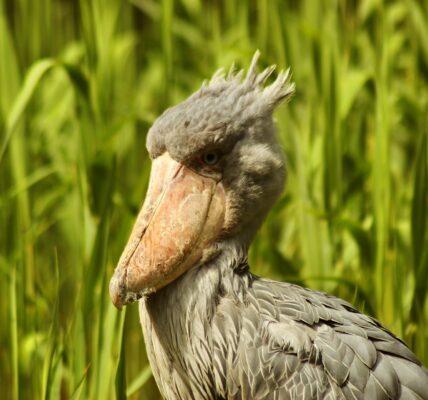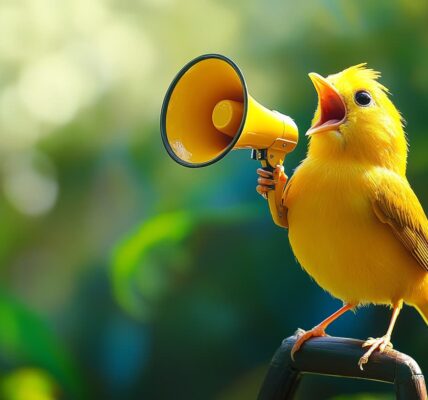Birdwatching is a fascinating hobby that appeals to people from all walks of life. With minimal investment, anyone can fully immerse in avian life’s diverse and vibrant world. No experience is needed to succeed in this endeavour, and with a few useful tips and techniques, anyone can become an expert virtually overnight. Those who aspire to embrace this new hobby and people who are simply curious about birding can put this newfound knowledge to good use.
Patience Is a Virtue for Birdwatchers
Equipment can be acquired, and tips and advanced techniques can be used to master the art of birdwatching, but there is no substitute for patience. This activity requires virtually no effort, and minimal involvement isn’t a shortcoming but a quality. All you need is patience, as the best results are achieved by those capable of sitting perfectly still and watching the surroundings.
Birds are famous for their keen senses and immediately leave an area if they sense danger. Since these winged creatures can take off in a matter of seconds and travel great distances, impatiens can jeopardise an otherwise promising day. That’s why the first and most important thing is to find a comfortable spot to settle in. You should feel comfortable in your spot of choice, as a long time can pass until you observe the first birds.
Birdwatching is a shining example where the voyage is just as exciting as the destination. Sometimes, you spend lengthy periods in a wonderful outdoor environment without catching a glimpse of any birds. If you enjoy the time spent outdoors, this is a reward, with the birds being the icing on the cake. Make a habit of standing still to avoid noises and sudden movements that frighten birds, and you will witness their incredible behaviours and interactions.
Basic Equipment for Birdwatching
Birdwatching is a relatively inexpensive hobby, so you don’t have to break the bank to make the most of this activity. However, you need quality binoculars essential for watching the elusive birds. Find a pair with a wide field of view and a comfortable grip, but don’t underestimate the importance of the lenses. You will be carrying binoculars everywhere, so try to find some that are not too heavy, as this can become a nuisance in the long run.
Some of the equipment needed doesn’t consist of physical items but the latest apps, such as Merlin Bird ID and iBird. These are just a handful of the products you can find online, and there are plenty of free applications, so feel free to shop around. Use them extensively to distinguish between different species and use bird calls and photo recognition to make things easier. We carry smartphones around anyway, so load them with these useful apps to enjoy birdwatching.
Essential gear for birdwatching mastery:
- Quality Binoculars
- Field Guides and Apps
- Comfortable Clothing and Footwear
- Birding Journal and Pen
- Weather-Appropriate Accessories:

Alt: Equipment for birdwatching
Research Goes a Long Way in Birdwatching
The beauty of birdwatching is that the best results are accomplished by those who invest time rather than money in this beautiful hobby. You need to be able to identify birds by their appearance, as well as distinctive songs and calls. There is no shortage of guides online, and if you truly enjoy this activity, the time spent researching will feel like hard work. It pays off to focus on the key attributes, such as colour, size, and beak shape, while also paying extra attention to their unique calls.
Even if you are in the right place, there is no guarantee that you will see the birds, but your odds will improve dramatically. Equally important is to choose the right time of the day, as the likelihood of seeing different types of birds increases. Generally speaking, early mornings are ideal, but some species are more active during late afternoons and evenings. You can’t go wrong if you visit parks and natural reserves, as these are home to various birds.
City dwellers will probably be deterred by the prospect of travelling great distances to see birds, but this is untrue. If you can’t venture into the wild for birdwatching, you can try to bring the feathered companions to your backyard. With a minimal investment, you can set up bird feeders and provide fresh water, which acts as a magnet for birds. They are also more likely to visit places that feature natural vegetation, as this represents a safe space for them where they can nest.
The time and place for birdwatching:
- Researching Birding Hotspots
- Golden Hours for Birding
- Seasonal Variations
- Backyard Birdwatching
- Participating in Organised Events
Take Birdwatching to the Next Level
Once you master the basics of birdwatching, you can take things to the next level by mastering fieldcraft techniques. Consider more subtle details if you are willing to dedicate time and resources to this beautiful hobby. Camouflage works for obvious reasons, so take earth-toned colours and always move slowly using natural features such as bushes and trees. The lower the footprint you leave, the greater the chances of witnessing their natural behaviours.
The beauty of birdwatching is that you can learn from your own experiences and become better at it with each day that passes. It helps to keep a birding Journal where you record your observations, including successes and failures. Remember to note the date and time of successful encounters and the weather conditions that might have contributed to this accomplishment. A journal can also be used to note the distinct characteristics of the observed species.
No matter how experienced you might be, someone else out there always knows just as much. Luckily, birdwatching communities are a thing, and you can join them to learn from your peers. This is a community-driven activity; people are amiable and willing to help newcomers join their ranks. You will be able to tap into the immense experience of veteran birders while also developing a sense of camaraderie that is characteristic of this hobby.
This is how you unlock the secrets of birdwatching:
| Insider Tips and Techniques | Benefits for Aspiring Avian Enthusiasts |
| Essential Gear | Invest in quality binoculars for detailed bird observation. |
| Patience and Awareness | Develop stillness, peripheral vision, and acute listening |
| Prime Locations and Timing | Choose optimal birding hotspots and plan outings wisely |
| Advanced Observation | Master fieldcraft, understand flight patterns, and use optics |
| Conservation Practices | Promote ethical birdwatching, support conservation efforts |
Conclusion
Birdwatching is a great hobby regardless of age, social background, and resources. For those who have mastered this pastime, it is the gift that keeps giving year after year. The benefits are numerous and, according to studies and personal experiences, include improvements in mental health. It is only fair to try to give something back, and you can do it by practising ethical birdwatching by respecting the nature of the behaviour of these flying wonders.
Birdwatchers should minimise the environmental impact and maintain a safe distance to avoid unnecessary disruption and stress. If you check all these boxes, you will hit two birds with one stone, pun intended. You will enjoy the time in the great outdoors and wonder at birds’ beauty and unique behaviours while doing the right thing. You can even make new friends by joining a birdwatching community and spending more time in the great outdoors.




